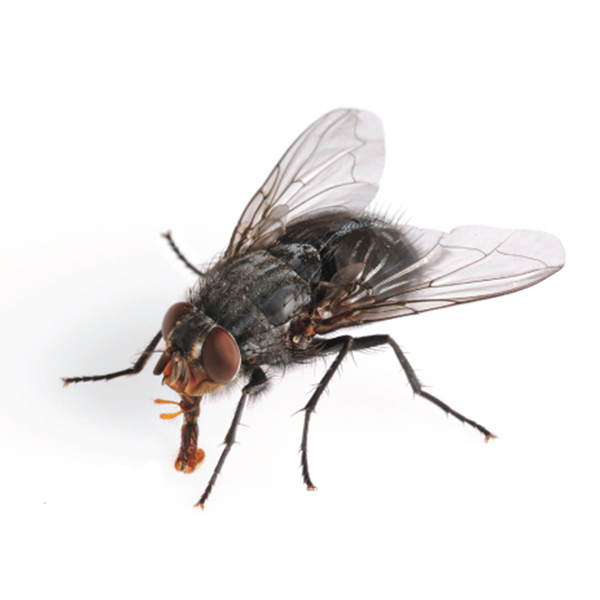Get Rid of House Flies: House Fly Control Information
Table Of Content

If you do need or want to use insecticide, pyrethrin-based insecticides are most common for indoor fly infestations. Be sure that you buy an insecticide specifically for indoor use, ventilate the area well, and follow the directions exactly. Several products can help deal with houseflies, including traps and sprays. A person should take care when using insecticide sprays, which can cause mild skin irritation.
Lesser House Fly Facts Get Rid of Little House Flies

Not only are house flies a nuisance, but they can also transport disease-causing organisms. Excessive fly populations are not only an irritant to farm workers but, when there are nearby human habitations, a public health problem could occur. It has a worldwide distribution and is prominent in the United States.
common name: house fly
If conditions are less favorable and temperatures cooler, this process might take up to two days. Fly traps may be useful in some fly control programs if enough traps are used, if they are placed correctly, and if they are used both indoors and outdoors. House flies are attracted to white surfaces and to baits that give off odors.
How to Deal with a Housefly Infestation
Within two to three days after being born from a pupae, female house flies are capable of reproduction. A female house fly is capable of laying up to 150 eggs in a batch. Over a period of a few days, she will produce five or six batches of eggs. However, despite their seemingly insignificant presence, houseflies play crucial roles in our ecosystem. They aid in decomposition and nutrient recycling but also pose health risks by potentially transmitting diseases.
Pupal Stage
Human interactions with houseflies are inevitable, given their propensity towards residential areas and food sources. After several days of voracious feeding and growth, the larva enters the pupal stage. This is where one of the most significant transformations occurs. The maggot’s body hardens into a dark brown or reddish capsule-like structure measuring about 8 mm in length. Inside this protective casing, the larva metamorphoses into an adult fly over several days. As the housefly evolves through its life cycle, it undergoes dramatic physical transformations that are both fascinating and complex.
A router that will (eventually) make your home Wi-Fi fly - The Australian Financial Review
A router that will (eventually) make your home Wi-Fi fly.
Posted: Mon, 15 Apr 2024 07:00:00 GMT [source]
Hence, understanding their life cycle not only instills an appreciation for nature’s complexity but also equips us with the knowledge to manage their presence effectively. As we continue to coexist with these ubiquitous creatures, let this understanding guide our actions toward maintaining a balance between human health safety and ecological harmony. One of the most common diseases transmitted by houseflies is diarrhea. Flies often carry bacteria such as Escherichia coli (E.coli) and Salmonella on their bodies or in their feces, both of which can cause severe diarrhea if ingested.
How Rushden found itself caught up in a fly 'nightmare' - BBC.com
How Rushden found itself caught up in a fly 'nightmare'.
Posted: Thu, 28 Sep 2023 07:00:00 GMT [source]
One remarkable aspect of housefly genetics is that they have a rapid rate of mutation. This means that their DNA changes at a fast pace compared to other species. These mutations can lead to variations in traits among houseflies, which can be advantageous or disadvantageous depending on the environmental conditions.
Once all these transformations are complete, what emerges from the puparium is not another squirming maggot but rather an adult fly ready to take flight! This newly emerged adult may appear pale and soft initially but soon hardens and darkens to its mature form. The best way to get rid of house flies is to prevent them from entering your house in the first place. In this guide, experts weigh in with their best tips to stave off these pesky insects. You can implement many natural fly remedies by using items around your house.
Four methods to remove houseflies
As maggots transition into the pupa stage, feeding ceases temporarily. Encased in a hard shell-like cocoon, the pupa undergoes metamorphosis – a process where its body structures change dramatically. During this time, it relies on stored energy from its larval stage to fuel its transformation. Houseflies, despite their small size, have a voracious appetite that plays an integral role in both their survival and their life cycle. Their diet varies at different stages of their life, largely dictated by their physical abilities and environmental availability. Light exposure also impacts the behavior of houseflies significantly.
Lights can also attract flies, so limit your lights at night, turning off unnecessary lights. Also, consider using yellow bug lights to repel house flies, Irenicus says. Around homes and businesses, screening or covering of windows, doors or air doors, and trash containers proves useful in denying access of flies to breeding sites. Packaging household trash in plastic bags, and burying trash under at least 15 cm of soil and in sanitary landfills also helps to eliminate breeding. The flies are inactive at night, with ceilings, beams and overhead wires within buildings, trees, and shrubs, various kinds of outdoor wires, and grasses reported as overnight resting sites.
A housefly infestation may not be a major concern, but it can also spread disease. There are many safe and easy ways to prevent infestations or get rid of them when they happen. Many housefly infestations are due to excess moisture and debris accumulating around the house. Water can often build up in wet or moist areas such as sinks or drains.
Comments
Post a Comment